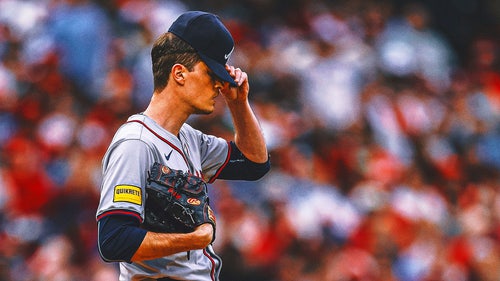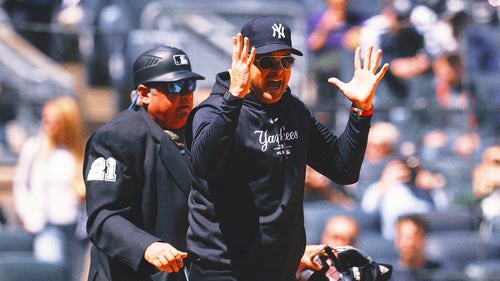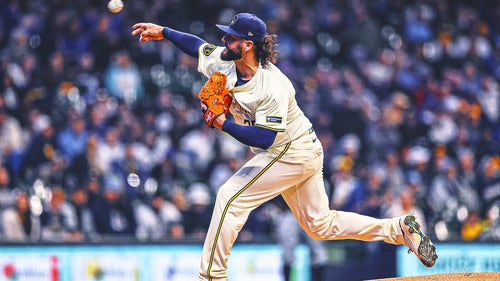
Atlanta Braves' Austin Riley shares his three commandments of hitting
By Jake Mintz
FOX Sports MLB Writer
Ronald Acuña Jr. is back from his ACL injury. Matt Olson is raking. Marcell Ozuna has returned to the every-day lineup. Ozzie Albies is always a dangerous at-bat.
Even with Freddie Freeman gone, the Atlanta Braves boast a lineup chock-full of recognizable names. But the club’s best hitter so far in 2022 isn’t Ozuna or Albies or even Olson.
It’s Austin Riley.
The mountainous third baseman burst onto the scene in 2021, with 33 homedingers and a .303 average, good for a 132 OPS+. In fact, he was one of just five players in baseball to tally at least 30 long balls and post an average above .300. The others? NL MVP Bryce Harper, AL MVP runner-up Vladimir Guerrero Jr., the aforementioned Freeman and current Phillies slugger Nick Castellanos. Nice company.
Riley has somehow taken yet another step forward in 2022. His seven homers are tied for third in the league, but more importantly, his "under-the-hood" exit velocity numbers have leaped even higher. Riley is in the 94th percentile for average exit velo, the 97th percentile for max exit velo and the 95th percentile for barrel percentage (percentage of batted balls he is hitting square).
The only other players in the top 10 of both max exit velo and barrel percentage are Aaron Judge and Giancarlo Stanton. Again, nice company.
Riley is a soft-spoken guy with a Mississippi accent thick as molasses, but ask him anything about his approach to hitting, and he gets pretty animated. Before a recent game against the Mets at Citi Field, the Silver-Slugging third baseman spent some time with FOX Sports sharing his three commandments of hitting.
1. Stride length
Riley is a self-described "big lower-half guy." And while he means big in terms of significance, rather than size, his unintentional double entendre is not wrong. A pick-up truck of a man at 6-foot-3, 240 pounds, Riley is both a "big lower-half guy" and a guy with a big lower half.
That means that dialing in the distance of his stride is vital to his timing, his direction and his power.
"Early on in my career," Riley told FOX Sports. "I would overstride and drift forward. I spend a lot of time in the offseason cleaning that up to make sure I land square and so I can rotate when I want to."
In the offseason, Riley maintains his stride length by wrapping a resistance band around his knees when hitting in order to limit the distance his front foot can move forward before he starts rotating with his upper half.
Drifting forward with the front side before launch position does a few things that limit a hitter’s ability to impact the baseball: (1) It spatially moves the hitting zone forward, toward the pitcher, making 92 look like 94 and 95 look like 97; (2) It can cause the hips to fire too early, which leads to over-rotation and pulling of the baseball, generating weak, pull-side ground balls; (3) It creates a lot of head movement, and the baseball is difficult enough to see already, so keeping the head still and steady allows a hitter to better track the baseball in flight.
"For me, when I land right with my lower half, the upper half is able to work," Riley said. "I really don't have to worry about my upper half too much. If I get this lower half right, it's all able to work the way it's supposed to."
2. Seeing strikes
As Riley said, the lower half is the key to his swing, but he also puts a big emphasis on attacking strikes. He swings and misses more than most hitters, but he’s quite intentional about what he swings at.
In fact, Riley’s in-zone swing rate (percentage of pitches within the strike zone at which he swings) is top-20 in baseball. The formula is simple: Find a strike, hit a strike.
"It sounds simple, but seeing the ball, making sure I'm seeing strikes, that’s my No. 2 commandment," Riley said.
3. Shape
Shape in reference to a swing can mean different things for different hitters, but for Riley, it’s about his bat’s path to and through the baseball. A swing that stays on plane — following a path that matches the path of the ball in-flight — will do more damage than a swing that varies from that plane.
"What I mean by shape is that sometimes, I recruit my shoulder a little bit, and it tenses, and I get a little bit steep," he said.
By "steep," Riley means that when his front shoulder isn’t loose, his bat path and his hands move down to the baseball, preventing him from driving it in the air with authority. Think of his shoulders like a see-saw, if the front shoulder tenses up and contracts the muscles downward, his back shoulder will rise slightly, and his swing will have a downward flow.
"So making sure my front shoulder is not tense [is key]," he said. "That way my backside can do the work."
Jake Mintz is the louder half of @CespedesBBQ and a baseball writer for FOX Sports. He’s an Orioles fan living in New York City, and thus, he leads a lonely existence most Octobers. If he’s not watching baseball, he’s almost certainly riding his bike. You can follow him on Twitter @Jake_Mintz.















































































































































